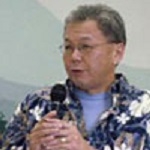
Denise Brown





Editor’s Note: Ashley McDonald, Membership Associate at Americans for the Arts, interviewed our member Felicia Shaw about her work in the arts field. At the time of this interview Felicia was in the process of transitioning from her role as interim executive director of Young Audiences of San Diego to her new role as executive director of the Regional Arts Commission (RAC) in her hometown of St. Louis, MO.
AM: Can you describe your role at St. Louis Regional Arts Commission (RAC)?
FS: My job at RAC will be to assume the leadership role of a local arts agency that has had an impressive 30-year history of growing the arts and culture community throughout the St. Louis region. I’ll be working to preserve the vitality of a successful organization that is ready to grow to the next level, particularly at a time when St. Louis is turning the corner and looking to the future. I am charged with establishing a vision for RAC and strategically moving the organization forward in a new and impactful way for the next decade and beyond.
Read More

“Every artist was first an amateur” – Ralph Waldo Emerson
When invited to write a blog response to the Hewlett Foundation report on arts leadership, I jumped at the opportunity. Along with my professional and civic interest in advancing leadership models that work across various lines of social difference, it is a topic around which I have feelings and thoughts.
As a 33-year-old executive director of an organization I co-founded while in college, who has no academic training in arts administration and has only held one job as an adult, I read the Moving Arts Leadership Forward report as timely for my career and interests. I can say with candor and hope that it is my desire to remain as the leader of WonderRoot for decades to come—but I would only dream of this so long as my leadership continues to advance the mission of the organization and the people it seeks to serve.
Read More

 Aracelis Girmay
Aracelis Girmay
I begin with that which is languageless. Gesture, wordless calls of grief or joy, exclamation, a dancer’s body moving in time. What John Edgar Wideman calls, in his essay “In Praise of Silence,” “the entire body’s expressive repertoire, subversive, liberating, freighted with laughter, song and sigh, burdened and energized by opposition.” Which means: not words alone, but every mark we make in the landscape, in the air. I begin here because when I think about the art and resistance work I am most enlivened and taught by this moment, I think about the Turf Feinz and Yak Films.
Read More

Americans for the Arts Annual Convention (AFTACON) regularly draws thousands of members of the arts world to one location for a whirlwind four days of workshops, recognition, plenaries, and arts excursions in some of the most incredible and dynamic cities in the country. There is never enough time to attend all the sessions I’m interested in. They all offer an insight into how art influences our economy, education, and communities – and how we visualize and interpret our world.
Read More

Congratulations and appreciation to our colleagues at The William and Flora Hewlett Foundation for this thoughtful, action-provoking report, Moving Arts Leadership Forward. It describes A Field at Risk. Or, to use a phrase coined by the International Futures Forum in the U.K., we have a conceptual emergency. Some key concepts from the report: